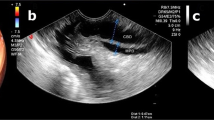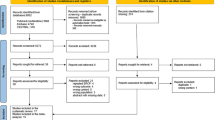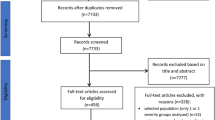Abstract
Pancreatitis remains the most common severe complication of endoscopic retrograde cholangiopancreatography (ERCP), and typically develops in 5–7% of patients. Although most post-ERCP pancreatitis (PEP) is mild, severe pancreatitis and its complications (including a systemic inflammatory response or the development of pseudocysts or pancreatic necrosis) can occur, and in rare cases death can result. A means of preventing PEP in all patients who undergo the procedure remains elusive. Proper patient selection for ERCP is critical to avoid unnecessary risk. Pharmacologic attempts to prevent PEP have been largely unsuccessful; encouraging results have been difficult to validate. Prophylactic stenting of the pancreatic duct and minimally traumatic cannulation techniques offer the most promise as a means of preventing PEP. This manuscript reviews risk factors for PEP as well as pharmacologic and procedural means that can be used to reduce its incidence.
Key Points
-
Pancreatitis remains a frequently encountered complication of endoscopic retrograde cholangiopancreatography (ERCP)
-
Proper patient selection is critical to reduce the frequency of post-ERCP pancreatitis (PEP): patients who require diagnostic ERCP or with 'soft' indications for the procedure should be considered for other noninvasive investigations, such as magnetic resonance cholangiopancreatography and endoscopic ultrasound
-
To date, no pharmacologic agent has been definitively shown to reduce the risk of PEP
-
Minimally traumatic cannulation techniques can reduce the risk of PEP
-
Pancreatic duct stenting can reduce the risk of PEP
This is a preview of subscription content, access via your institution
Access options
Subscribe to this journal
Receive 12 print issues and online access
$209.00 per year
only $17.42 per issue
Buy this article
- Purchase on Springer Link
- Instant access to full article PDF
Prices may be subject to local taxes which are calculated during checkout


Similar content being viewed by others
References
Friedland S et al. (2002) Bedside scoring system to predict the risk of developing pancreatitis following ERCP. Endoscopy 34: 483–488
Freeman ML et al. (2001) Risk factors for PEP: a prospective, multicenter study. Gastrointest Endosc 54: 425–434
Tsujino T et al. (2005) Risk factors for pancreatitis in patients with common bile duct stones managed by endoscopic papillary balloon dilation. Am J Gastroenterol 100: 38–42
Masci E et al. (2003) Risk factors for pancreatitis following endoscopic retrograde cholangiopancreatography: a meta-analysis. Endoscopy 35: 830–834
Testoni PA et al. (1999) Serum amylase measured four hours after endoscopic sphincterotomy is a reliable predictor of postprocedure pancreatitis. Am J Gastroenterol 94: 1235–1241
Vandervoort J et al. (2002) Risk factors for complications after performance of ERCP. Gastrointest Endosc 56: 652–656
Masci E et al. (2001) Complications of diagnostic and therapeutic ERCP: a prospective multicenter study. Am J Gastroenterol 96: 417–423
Loperfido S et al. (1998) Major early complications from diagnostic and therapeutic ERCP: a prospective multicenter study. Gastrointest Endosc 48: 1–10
Barthet M et al. (2002) Complications of endoscopic sphincterotomy: results from a single tertiary referral center. Endoscopy 34: 991–997
Freeman ML et al. (1996) Complications of endoscopic biliary sphincterotomy. N Engl J Med 335: 909–918
Cohen S et al. (2002) National Institutes of Health State-of-the-Science Conference Statement: ERCP for diagnosis and therapy. Gastrointest Endosc 56: 803–809
Cotton PB et al. (1991) Endoscopic sphincterotomy complications and their management: an attempt at consensus. Gastrointest Endosc 37: 383–393
Singh P et al. (2004) Sphincter of Oddi manometry does not predispose to post-ERCP acute pancreatitis. Gastrointest Endosc 59: 499–505
Christoforidis E et al. (2002) PEP and hyperamylasemia: patient-related and operative risk factors. Endoscopy 34: 286–292
Laugier R et al. (1991) Changes in pancreatic exocrine secretion with age: pancreatic exocrine secretion does decrease in the elderly. Digestion 50: 202–211
Guelrud M et al. (1988) Effect of nifedipine on sphincter of Oddi motor activity: studies in healthy volunteers and patients with biliary dyskinesia. Gastroenterology 95: 1050–1055
Sand J and Nordback I (1993) Prospective randomized trial of the effect of nifedipine on pancreatic irritation after endoscopic retrograde cholangiopancreatography. Digestion 54: 105–111
Prat F et al. (2002) Nifedipine for prevention of PEP: a prospective, double-blind randomized study. Gastrointest Endosc 56: 202–208
Staritz M et al. (1985) Effect of glyceryl trinitrate on the sphincter of Oddi motility and baseline pressure. Gut 26: 194–197
Staritz M et al. (1985) Endoscopic removal of common bile duct stones through the intact papilla after medical sphincter dilation. Gastroenterology 88: 1807–1811
Sudhindran S et al. (2001) Prospective randomized double-blind placebo-controlled trial of glyceryl trinitrate in endoscopic retrograde cholangiopancreatography-induced pancreatitis. Br J Surg 88: 1178–1182
Moreto M et al. (2003) Transdermal glyceryl trinitrate for prevention of PEP: a randomized double-blind trial. Gastrointest Endosc 57: 1–7
Schwartz JJ et al. (2004) The effect of lidocaine sprayed on the major duodenal papilla on the frequency of PEP. Gastrointest Endosc 59: 179–184
Hannigan BF et al. (1985) Hyperamylasemia after ERCP with ionic and non-ionic contrast media. Gastrointest Endosc 31: 109–110
Cunliffe WJ et al. (1987) A randomised, prospective study comparing two contrast media in ERCP. Endoscopy 19: 201–202
Johnson GK et al. (1995) A comparison of nonionic versus ionic contrast media: results of a prospective, multicenter study. Midwest Pancreaticobiliary Study Group. Gastrointest Endosc 42: 312–316
Sherman S et al. (1994) PEP: randomized, prospective study comparing a low- and high-osmolality contrast agent. Gastrointest Endosc 40: 422–427
Raty S et al. (2001) Post-ERCP pancreatitis: reduction by routine antibiotics. J Gastrointest Surg 5: 339–345
Niederau C et al. (1994) Prophylactic antibiotic treatment in therapeutic or complicated diagnostic ERCP: results of a randomized controlled clinical study. Gastrointest Endosc 40: 533–537
Vatn MH et al. (1980) A small dose of somatostatin inhibits the secretin stimulated secretion of bicarbonate, amylase, and chymotrypsin in man. J Endocrinol Invest 3: 279–282
Poon RT et al. (1999) Prophylactic effect of somatostatin on PEP: a randomized controlled trial. Gastrointest Endosc 49: 593–598
Poon RT et al. (2003) Intravenous bolus somatostatin after diagnostic cholangiopancreatography reduces the incidence of pancreatitis associated with therapeutic endoscopic retrograde cholangiopancreatography procedures: a randomised controlled trial. Gut 52: 1768–1773
Arvanitidis D et al. (2004) Can somatostatin prevent PEP? Results of a randomized controlled trial. J Gastroenterol Hepatol 19: 278–282
Andriulli A et al. (2002) Gabexate or somatostatin administration before ERCP in patients at high risk for PEP: a multicenter, placebo-controlled, randomized clinical trial. Gastrointest Endosc 56: 488–495
Andriulli A et al. (2003) Antisecretory vs. antiproteasic drugs in the prevention of post-ERCP pancreatitis: the evidence-based medicine derived from a meta-analysis study. JOP 4: 41–48
Kemmer TP et al. (1992) Inhibition of human exocrine pancreatic secretion by the long-acting somatostatin analogue octreotide (SMS 201-995). Aliment Pharmacol Ther 6: 41–50
Tulassay Z et al. (1998) Octreotide in the prevention of pancreatic injury associated with endoscopic cholangiopancreatography. Aliment Pharmacol Ther 12: 1109–1112
Testoni PA et al. (2001) Octreotide 24-h prophylaxis in patients at high risk for PEP: results of a multicenter, randomized, controlled trial. Aliment Pharmacol Ther 15: 965–972
Manolakopoulos S et al. (2002) Octreotide versus hydrocortisone versus placebo in the prevention of PEP: a multicenter randomized controlled trial. Gastrointest Endosc 55: 470–475
Andriulli A et al. (2000) Pharmacologic treatment can prevent pancreatic injury after ERCP: a meta-analysis. Gastrointest Endosc 51: 1–7
Cavallini G and Frulloni L (2001) Somatostatin and octreotide in acute pancreatitis: the never-ending story. Dig Liver Dis 33: 192–201
Budzynska A et al. (2001) A prospective, randomized, placebo-controlled trial of prednisone and allopurinol in the prevention of ERCP-induced pancreatitis. Endoscopy 33: 766–772
De Palma GD and Catanzano C (1999) Use of corticosteriods in the prevention of PEP: results of a controlled prospective study. Am J Gastroenterol 94: 982–985
Dumot JA et al. (1998) Pretreatment with methylprednisolone to prevent ERCP-induced pancreatitis: a randomized, multicenter, placebo-controlled clinical trial. Am J Gastroenterol 93: 61–65
Sherman S et al. (2003) Does prophylactic administration of corticosteroid reduce the risk and severity of PEP: a randomized, prospective, multicenter study. Gastrointest Endosc 58: 23–29
Mosler P et al. (2005) Oral allopurinol does not prevent the frequency or the severity of PEP. Gastrointest Endosc 62: 245–250
Katsinelos P et al. (2005) High-dose allopurinol for prevention of PEP: a prospective randomized double-blind controlled trial. Gastrointest Endosc 61: 407–415
Katsinelos P et al. (2005) Intravenous N-acetylcysteine does not prevent PEP. Gastrointest Endosc 62: 105–111
Toulon P et al. (1991) Involvement of heparin cofactor II in chymotrypsin neutralization and in the pancreatic proteinase–antiproteinase interaction during acute pancreatitis in man. Eur J Clin Invest 21: 303–309
Rabenstein T et al. (2002) Complications of endoscopic sphincterotomy: can heparin prevent acute pancreatitis after ERCP? Gastrointest Endosc 55: 476–483
Rabenstein T et al. (2004) Low-molecular-weight heparin does not prevent acute PEP. Gastrointest Endosc 59: 606–613
Van Laethem JL et al. (1998) Multisystemic production of interleukin 10 limits the severity of acute pancreatitis in mice. Gut 43: 408–413
Deviere J et al. (2001) Interleukin 10 reduces the incidence of pancreatitis after therapeutic endoscopic retrograde cholangiopancreatography. Gastroenterology 120: 498–505
Dumot JA et al. (2001) A randomized, double blind study of interleukin 10 for the prevention of ERCP-induced pancreatitis. Am J Gastroenterol 96: 2098–2102
Cavallini G et al. (1996) Gabexate for the prevention of pancreatic damage related to endoscopic retrograde cholangiopancreatography. Gabexate in digestive endoscopy—Italian Group. N Engl J Med 335: 919–923
Andriulli A et al. (2002) Gabexate or somatostatin administration before ERCP in patients at high risk for PEP: a multicenter, placebo-controlled, randomized clinical trial. Gastrointest Endosc 56: 488–495
Fogel EL et al. (2002) Sphincter of Oddi dysfunction: pancreaticobiliary sphincterotomy with pancreatic stent placement has a lower rate of pancreatitis than biliary sphincterotomy alone. Endoscopy 34: 280–285
Harewood GC and Baron TH (2002) An assessment of the learning curve for precut biliary sphincterotomy. Am J Gastroenterol 97: 1708–1712
Komatsu Y et al. (1998) Endoscopic papillary balloon dilation for the management of common bile duct stones: experience of 226 cases. Endoscopy 30: 12–17
Bergman JJ et al. (1997) Randomised trial of endoscopic balloon dilation versus endoscopic sphincterotomy for removal of bile duct stones. Lancet 349: 1124–1149
Vlavianos P et al. (2003) Endoscopic balloon dilatation versus endoscopic sphincterotomy for the removal of bile duct stones: a prospective randomised trial. Gut 52: 1165–1169
Disario JA et al. (2004) Endoscopic balloon dilation compared with sphincterotomy for extraction of bile duct stones. Gastroenterology 127: 1291–1299
Smithline A et al. (1993) Effect of prophylactic main pancreatic duct stenting on the incidence of biliary endoscopic sphincterotomy-induced pancreatitis in high-risk patients. Gastrointest Endosc 39: 652–657
Sherman S et al. (1995) Does leaving a main pancreatic duct stent in place reduce the incidence of precut biliary sphincterotomy induced pancreatitis? [abstract] Am J Gastroenterol 90: 1614
Tarnasky PR et al. (1998) Pancreatic stenting prevents pancreatitis after biliary sphincterotomy in patients with sphincter of Oddi dysfunction. Gastroenterology 115: 1518–1524
Fazel A et al. (2003) Does a pancreatic duct stent prevent PEP? A prospective randomized study. Gastrointest Endosc 57: 291–294
Singh P et al. (2004) Does prophylactic pancreatic stent placement reduce the risk of post-ERCP acute pancreatitis? A meta-analysis of controlled trials. Gastrointest Endosc 60: 544–550
Freeman ML and Guda NM (2004) Prevention of PEP: a comprehensive review. Gastrointest Endosc 59: 845–864
Goldberg E et al. (2005) Pancreatic-duct stent placement facilitates difficult common bile duct cannulation. Gastrointest Endosc 62: 592–596
Brackbill S et al. (2006) A survey of physician practices on prophylactic pancreatic stents. Gastrointest Endosc 64: 45–52
Rashdan A et al. (2004) Improved stent characteristics for prophylaxis of post-ERCP pancreatitis. Clin Gastroenterol Hepatol 2: 322–329
Freeman ML et al. (2004) Pancreatic stent insertion: consequences of failure and results of a modified technique to maximize success. Gastrointest Endosc 59: 8–14
Smith MT et al. (1996) Alterations in pancreatic ductal morphology following polyethylene pancreatic stent therapy. Gastrointest Endosc 44: 268–275
Michopoulos S et al. (2003) First intention of the biliary tree cannulation by means of a sphincterotome and a hydrophilic guidewire is a low risk-high success rate ERCP method [abstract]. Gastrointest Endosc 57: AB201
Lella F et al. (2004) A simple way of avoiding PEP. Gastrointest Endosc 59: 830–834
Acknowledgements
The authors wish to thank Amy L Adler for her editorial assistance.
Author information
Authors and Affiliations
Corresponding author
Ethics declarations
Competing interests
The authors declare no competing financial interests.
Rights and permissions
About this article
Cite this article
Frank, C., Adler, D. Post-ERCP pancreatitis and its prevention. Nat Rev Gastroenterol Hepatol 3, 680–688 (2006). https://doi.org/10.1038/ncpgasthep0654
Received:
Accepted:
Issue Date:
DOI: https://doi.org/10.1038/ncpgasthep0654



